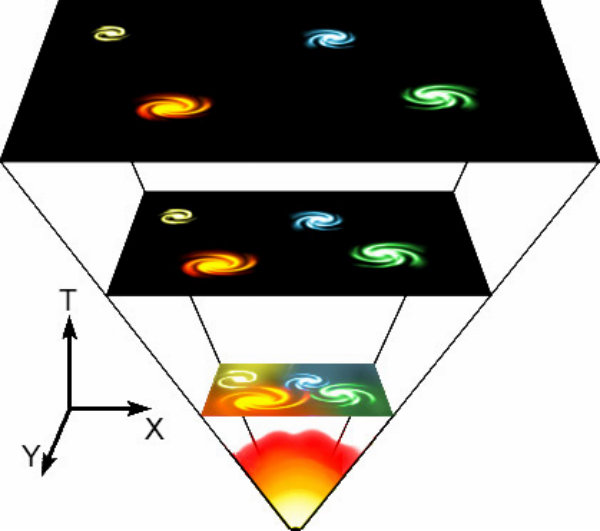
- Geography India - Introduction
- Geography India - Physical Aspect
- Geography India - Drainage System
- Geography India - Climate
- Geography India - Natural Vegetation
- Geography India - National Forest
- Geography India - Wildlife
- Geography India - Soil
- Geography India - Land Resources
- Geography India - Agriculture
- Geography India - Mineral Resources
- Geography India - Energy Resources
- Geography India - Industry
- Geography India - Transport
- Geography India - Communication
- Geography India - Foreign Trade
- Geography India - The People
- Geography India - Settlement
- Geography India - Migration
- Regional Development
- Geography India - Disasters
- Geography of the World
- Geography World - Introduction
- Evolution of the Earth
- Geography World - Climate
- Geography World - Transport
- Geography World - Communications
- Geography World - Population
- Human Settlement
- Human Development
- International Trade
- Geography Useful Resources
- Geography - Online Quiz
- Geography - Online Test
- Geography - Quick Guide
- Geography - Useful Resources
- Geography - Discussion
Evolution of the Earth
Introduction
There are dozens of hypotheses proposed regarding the origin of the earth by different philosophers.
However, one of the hypotheses namely Nebular Hypothesis given by Immanuel Kant and revised by Laplace became more popular.
According to Nebular Hypothesis, the planets were formed out of a cloud of material associated with a youthful sun.
Big Bang Theory, which is also known as expanding universe hypothesis is the modern and the most accepted theory.
Edwin Hubble was the first one who provided evidence that the universe is expanding, in 1920.
It is believed that the event of Big Bang took place about 13.7 billion years from now.

According to the Big Bang theory (as shown in the image given below), the universe originated from an extremely dense and hot state and keeps expanding till date.
Galaxy is a group of stars. Galaxies normally spread over vast distances, which are measured in thousands of light-years.
A galaxy starts to form by the accumulation of hydrogen gas in the form of a very large cloud called nebula.
One light year is the distance travelled by light in one year, which is equal to $9.46110^{12}km$.
Light travels at the speed of 300,000 km/second.
The mean distance between the sun and the earth is about 149,598,000 km. And, in terms of light years, it is 8.311 minutes.
Milky Way
Our Solar system (part of Milky Way galaxy) consists of eight planets, the sun, 63 moons, millions of smaller bodies like asteroids and comets and huge quantity of dust-particles and gases.
The planets of Milky Way were formed about 4.6 billion years ago.
The planets, Mercury, Venus, Earth, and Mars are called the inner planets as they lie between the sun and the belt of asteroids and the rest four planets i.e. Jupiter, Saturn, Uranus, and Neptune are known as outer planets.
In addition to this, the inner planets are also known as Terrestrial Planets, meaning earth-like as they are made up of rocks and metals, and have relatively high densities.
On the other hand, the outer planets are known as Jovian (Jupiter like) or Gas Giant Planets.
However, all the planets are formed in the same period i.e. about 4.6 billion years ago.
The terrestrial planets were formed in the closer to the parent star where it was too warm for gases to condense to solid particles, whereas Jovian planets were formed at quite a distant location from the parent star.
The solar wind was most intense nearer to the sun; so, it blew off lots of gas and dust from the terrestrial planets; however, the solar winds were not all that intense to cause similar removal of gases from the Jovian planets.

The moon is the only natural satellite of the planet earth.
The earth has a layered structure and hence, from the surface to deeper depths (i.e. inner core), the earth has different zones/layers and each of these contains materials of different characteristics.
The present composition of the earths atmosphere is chiefly contributed by nitrogen and oxygen, as the primordial atmosphere with hydrogen and helium, is supposed to have been stripped off as a result of the solar winds.
Degassing is the process through which the gases were outpoured from the interior of the earth.
Further, continuous volcanic eruptions contributed water vapor and gases to the atmosphere.
The earths oceans were formed within 500 million years from the evolution of the earth.
About 3,800 million years ago, life began to evolve and the process of photosynthesis got evolved about 2,500-3,000 million years ago.
Primarily, life remained confined to the oceans for a long time.
Oceans began to have the contribution of oxygen through the process of photosynthesis.
Over a period of time, oceans were saturated with oxygen; however, about 2,000 million years ago, oxygen began to flood the atmosphere.